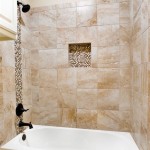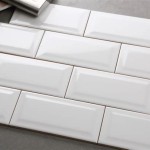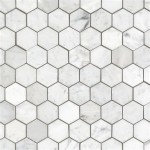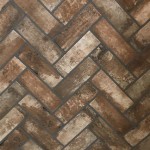Can You Tile Onto Breeze Block Walls In Revit 2024?
Revit 2024, Autodesk's building information modeling (BIM) software, offers robust capabilities for simulating and documenting architectural design. One common question that arises in architectural modeling pertains to the realistic representation of interior finishes, specifically, the application of tile to breeze block walls. This article will investigate the feasibility of modeling tiling onto breeze block walls within Revit 2024, examining the methods available, the challenges encountered, and best practices for achieving accurate and visually compelling simulations.
Breeze blocks, also known as concrete blocks, are a ubiquitous construction material. Their inherent texture and exposed aesthetic are sometimes desired, while other times they serve as a structural base for applied finishes. The application of tile to breeze block walls introduces specific considerations in the Revit modeling process. These include accurate representation of material layers, handling potential irregularities in the breeze block surface, and managing performance impact associated with detailed surface tessellation. Therefore, effectively modeling tile on breeze block requires a strategic approach utilizing Revit's features and understanding the software's limitations.
Understanding Revit's Material and Wall Layering Capabilities
Revit relies on a material-based system to visually represent the properties of building elements. Each material definition contains parameters for appearance, thermal properties, and structural behavior. When modeling tile on breeze block, the first step involves creating or modifying material definitions for both the breeze block and the tile. The breeze block material should accurately reflect its color, texture, and reflectivity. Similarly, the tile material should capture its color, finish (glossiness or matte), and any surface pattern. High-quality texture maps are critical for visually realistic representations of both materials.
Revit's wall structure is defined through layers, each assigned a specific function and material. To model tile applied to a breeze block wall, the wall type needs to be modified to include an additional layer representing the tile. This layer should be positioned as an exterior or interior finish layer, depending on the design intent. The thickness of the tile layer should accurately reflect the planned tile thickness, which could include the thin-set mortar bed. Furthermore, consideration should be given to the 'Structural Material' property of the wall type. If the breeze block isLoad-bearing, its material should be set as the structural material within the wall type definition.
The accuracy of the layering is paramount for generating accurate schedules and quantity takeoffs. By defining distinct layers for the breeze block and tile, Revit can automatically calculate the area of each material, which is essential for cost estimation and material procurement. Also, the layering facilitates understanding the wall's overall thermal performance, assuming thermal properties are accurately assigned to each material.
Approaches to Modeling Tile on Breeze Block Walls
Several techniques can be employed to model tile on breeze block walls in Revit 2024, each with its own advantages and disadvantages. These approaches range from simple material application to more complex modeling techniques involving split faces, decals, and custom patterns.
Simple Material Application:
The most basic approach involves applying a tile material directly to the surface of the breeze block wall. This can be achieved by using the "Paint" tool within Revit's Modify tab. While this method is quick and efficient, it lacks the geometric detail of individual tiles. It functions primarily as a visual representation and does not provide information for accurate quantity takeoffs or detailed construction documentation. This approach is suitable for conceptual design phases where speed is prioritized over accuracy.Split Face and Paint:
A more refined technique involves using the "Split Face" tool to divide the surface of the breeze block wall into individual tile areas. Once the face is split, the tile material can be applied to each individual tile. This method offers greater control over tile placement and allows for the creation of custom tile patterns. However, it can be time-consuming, especially for large wall areas with complex patterns. It does offer better visual simulation compared to the simple material application method, displaying the outlines of individual tiles.Decals:
Revit's decal functionality allows users to overlay images onto surfaces. A decal image of a tile pattern can be created and applied to the breeze block wall. Decals are useful for adding visual detail without significantly increasing the model's file size. However, they are purely visual and do not contribute to quantity takeoffs or thermal analysis. Decals also may become distorted when viewed at oblique angles. The primary advantage of using decals is the minimal impact on Revit's performance, making it suitable for large projects where model size is a concern.Custom Patterns:
Revit's pattern editor allows users to create custom fill patterns that can be applied to surfaces. This method involves defining a pattern that represents the tile arrangement. These patterns can either be drafting patterns (for 2D views) or model patterns (for 3D views). The model patterns are particularly useful for representing the tile geometry in 3D views. This approach provides better control over tile appearance and pattern, however, generating complex patterns can be challenging and can impact model performance.Using Repeating Details:
For orthogonal tile layouts, the repeating detail component can be leveraged to efficiently populate large areas. This involves creating a detail component representing a single tile or a small tile array, then using the repeating detail tool to replicate this component across the surface of the breeze block wall. This method provides precise control over tile placement and avoids the computational load associated with numerous individual elements. However, it is limited to regular orthogonal patterns and is not suitable for more complex arrangements.Addressing Challenges and Optimizing Performance
Modeling tile on breeze block walls in Revit 2024 presents several challenges, primarily related to model performance and accuracy. Detailed surface tessellation, especially when using split faces or custom patterns, can significantly increase file size and slow down Revit's performance. Furthermore, variations in the surface of the breeze block wall can complicate the accurate placement of tiles.
Performance Optimization:
To mitigate performance issues, it is crucial to optimize the level of detail used in the tile representation. Avoid excessive detail if it is not essential for the project deliverables. Using decals or simple material application for distant views can significantly reduce the computational load. For closer views, consider using split faces or custom patterns, but be mindful of the number of faces created. Employing the repeating detail tool can be useful for areas with highly repetitive tile patterns.Handling Breeze Block Irregularities:
Breeze blocks often have slight irregularities in their surface. Accurately representing these irregularities can be computationally expensive and may not be necessary for most projects. Instead, focus on accurately representing the overall dimensions and texture of the breeze block wall. If precise tile placement is critical, consider using Revit's direct manipulation tools to adjust the position of individual tiles to account for any surface variations.Material Definition Considerations:
Use high-quality texture maps to represent the tile and breeze block materials. Ensure that the texture maps are appropriately scaled and aligned to avoid distortion. Experiment with different rendering settings to achieve a realistic appearance. Revit's rendering engine provides various options for controlling lighting, shadows, and reflections, all of which can significantly impact the visual quality of the tile and breeze block representation.Worksharing Considerations:
When working on a collaborative project, it is essential to coordinate the modeling approach with other team members. Establish clear guidelines for the level of detail and the methods used to represent tile on breeze block walls. Regularly audit the model to identify and address any performance bottlenecks. Use Revit's worksharing features to divide the model into smaller, manageable sections. This can help to improve performance and prevent conflicts between team members.In summary, successfully modeling tile on breeze block walls in Revit 2024 involves a careful balance between visual realism, accuracy, and performance. By understanding Revit's material and layering capabilities, employing appropriate modeling techniques, and addressing potential challenges, architects and designers can create accurate and visually compelling simulations of tiled breeze block walls.

Stacked Wall All Strata Quantities Autodesk Community Revit S

Editing Wall Material To Concrete In Plan View Autodesk Community

Special Design Of Breeze Blocks Hexagon 17 Đường Số 40 Bình An Quận 2 Thành Phố Hồ Chí Minh Vietnam Viet Tiles Corporation

Solved Maltese Hollow Concrete Blocks Into Revit Family Autodesk Community

Solved Maltese Hollow Concrete Blocks Into Revit Family Autodesk Community

Revit Architecture Pattern Concrete Block In

Solved Maltese Hollow Concrete Blocks Into Revit Family Autodesk Community

Solved Maltese Hollow Concrete Blocks Into Revit Family Autodesk Community

Solved Maltese Hollow Concrete Blocks Into Revit Family Autodesk Community

Revit Architecture Pattern Concrete Block In
Related Posts








